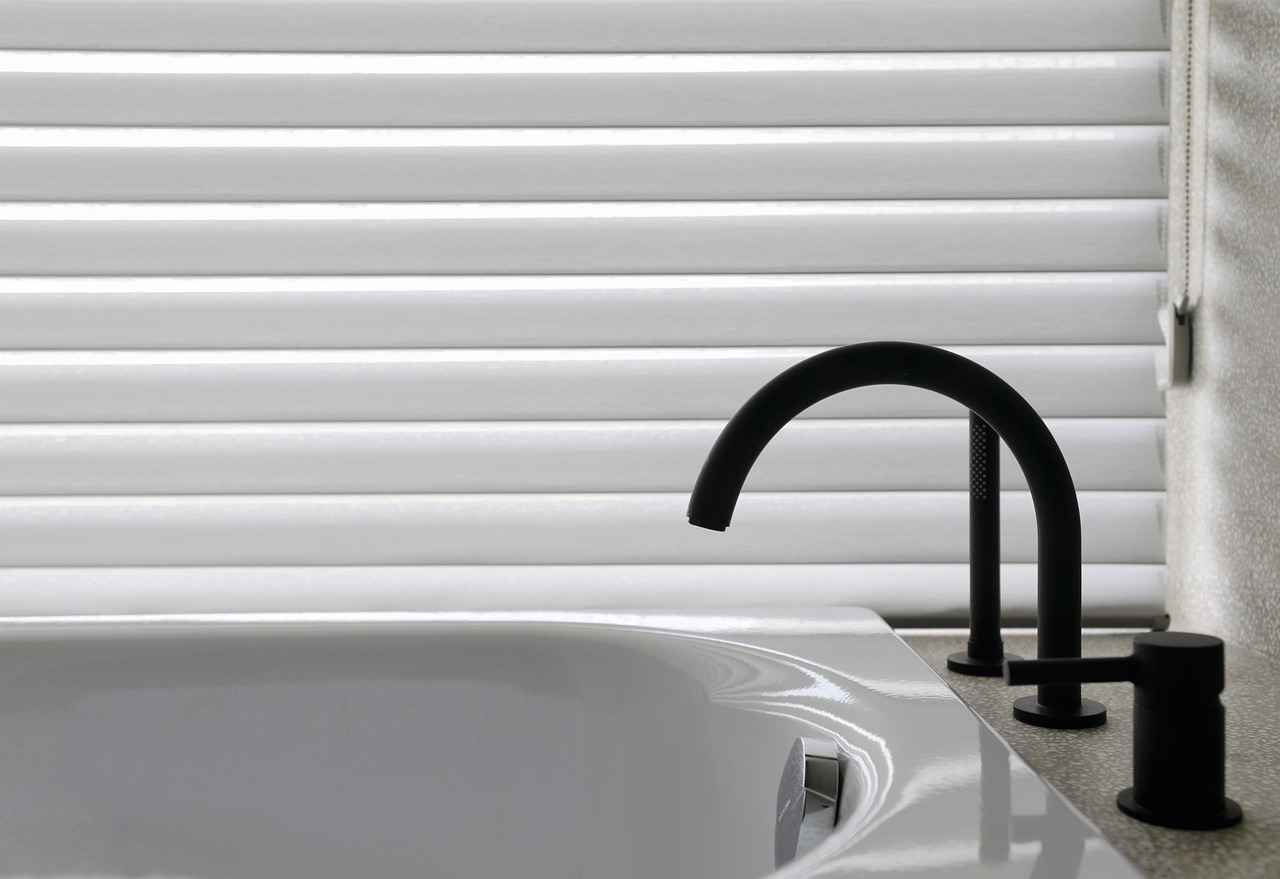Maintaining the right pH level in your hot tub is essential for ensuring a safe and enjoyable soaking experience. This article delves into effective methods to lower pH levels, thereby improving water quality and enhancing user comfort.
The pH level measures the acidity or alkalinity of water, with a scale ranging from 0 to 14. For hot tubs, the ideal pH range is typically between 7.2 and 7.8. Maintaining this balance is crucial as it affects not only the comfort of the users but also the longevity of the hot tub equipment. If the pH is too high, it can lead to skin irritation, cloudy water, and even damage to the hot tub’s components.
Regular testing of pH levels is vital for maintaining optimal water quality. There are several methods to test pH, including:
- Test Strips: Quick and easy to use but may lack precision.
- Liquid Test Kits: More accurate and reliable, though they require more time and effort.
Choose the method that best fits your needs for consistent monitoring.
High pH levels can result from various factors, including:
- Water Source: Hard water or water with high mineral content can elevate pH.
- Chemical Imbalances: Improper chemical usage can disrupt the pH balance.
- Environmental Influences: Debris, leaves, and other contaminants can affect water chemistry.
Identifying these causes can help you take preventive measures.
Utilizing the right chemicals is essential for effectively reducing pH levels. Common pH decreasers include:
- Sodium Bisulfate: A popular choice for lowering pH, it’s easy to use and effective.
- Muriatic Acid: Highly effective but requires careful handling due to its corrosive nature.
Always follow the manufacturer’s guidelines for safe application.
To ensure stable pH levels, ongoing monitoring and adjustments are necessary. Here are some practical tips:
- Regular Testing: Test the water at least once a week.
- Consistent Chemical Application: Apply pH decreasers as needed based on test results.
- Shock Treatments: Regularly shock your hot tub to help maintain water clarity and balance.
These practices will help keep your hot tub water in the ideal pH range.
Recognizing the signs of pH imbalance can prevent further complications. Symptoms to watch for include:
- Skin Irritation: Redness or itchiness may indicate high pH levels.
- Cloudy Water: This can signal that the water chemistry is off.
- Equipment Corrosion: Signs of wear on heating elements or filters can suggest pH issues.
Being proactive about these signs can help you maintain a safe and enjoyable hot tub environment.

What is pH and Why Does It Matter in Hot Tubs?
Understanding the concept of pH and its significance in hot tub maintenance is essential for achieving optimal water balance, ensuring user comfort, and prolonging the lifespan of your equipment. The pH scale measures how acidic or alkaline a substance is, ranging from 0 to 14, with 7 being neutral. In the context of hot tubs, maintaining a pH level between 7.2 and 7.8 is crucial for several reasons.
Firstly, when the pH is within this ideal range, it helps to ensure that sanitizers, such as chlorine or bromine, work effectively. If the pH is too high, these sanitizers become less effective, leading to potential issues like bacterial growth and cloudy water. Conversely, if the pH is too low, it can cause skin and eye irritation for users. This discomfort can deter people from enjoying the hot tub experience.
Secondly, maintaining a balanced pH level is vital for the longevity of your hot tub equipment. High pH levels can lead to scale formation on surfaces and within pipes, which can cause clogs and inefficiencies in heating systems. On the other hand, low pH can lead to corrosion of metal components, resulting in costly repairs or replacements. Thus, keeping pH levels stable not only enhances user satisfaction but also protects your investment.
Furthermore, understanding the chemical interactions in your hot tub water is essential. Water with a balanced pH helps maintain the proper alkalinity and hardness levels, which are crucial for overall water quality. Alkalinity acts as a buffer to stabilize pH levels, making it easier to manage fluctuations caused by factors like rainwater, bathers, and chemical additions.
In summary, the importance of monitoring and maintaining the pH level in your hot tub cannot be overstated. Regular testing and adjustments will lead to a more enjoyable soaking experience and will extend the lifespan of your hot tub components. By understanding the ideal pH range and its impact on water chemistry, you can ensure a safe, comfortable, and enjoyable hot tub environment for all users.

How to Test pH Levels in Your Hot Tub?
Maintaining the right pH levels in your hot tub is essential for ensuring a safe and enjoyable experience. Regular testing of pH levels is crucial for keeping the water clean, clear, and comfortable for users. This section details the various methods available for testing pH, including test strips and liquid test kits, along with their respective advantages and disadvantages.
- Test Strips:
- Easy to Use: Test strips are incredibly user-friendly. Simply dip the strip into the water and compare the color change to the chart provided.
- Quick Results: Most test strips provide results within seconds, making them ideal for regular checks.
- Cost-Effective: They are generally less expensive than liquid test kits, making them a popular choice for many hot tub owners.
- Liquid Test Kits:
- More Accurate: Liquid test kits often provide more precise readings compared to test strips, which can be subject to color interpretation errors.
- Comprehensive Testing: Many liquid kits offer the ability to test for other important parameters, such as alkalinity and chlorine levels, in addition to pH.
- Longer Process: The testing process can take longer, as it involves multiple steps, including adding reagents and waiting for color changes.
Choosing between test strips and liquid test kits depends on your personal preferences and testing needs. If you are looking for convenience and speed, test strips may be the way to go. However, if accuracy and comprehensive analysis are your priorities, investing in a liquid test kit would be beneficial.
Regular testing is key to maintaining balanced water chemistry. It is recommended to test your hot tub’s pH levels at least once a week or more frequently if the hot tub is used often. Additionally, testing after heavy usage or after adding chemicals can help ensure the water remains safe and comfortable.
Understanding the signs of imbalanced pH can save you from costly repairs and discomfort. Look for the following indicators:
- Skin Irritation: If users experience itching or rashes, it may be a sign of high or low pH levels.
- Cloudy Water: Water that appears cloudy can indicate improper chemical balance, often linked to pH issues.
- Corroded Equipment: High pH levels can lead to scaling and corrosion of your hot tub’s components, affecting longevity.
In conclusion, understanding how to test pH levels in your hot tub is vital for ensuring a pleasant and safe soaking experience. By familiarizing yourself with the available testing methods and knowing the signs of imbalanced pH, you can take proactive steps to maintain optimal water quality.

What Common Causes Lead to High pH in Hot Tubs?
Understanding the factors that contribute to elevated pH levels in hot tubs is essential for maintaining a safe and enjoyable soaking experience. High pH can lead to various issues, including skin irritation and equipment damage. This section delves into the common causes of high pH levels, helping users identify potential problems and take corrective measures.
- Water Source: The origin of your hot tub water plays a significant role in its pH levels. If you are using well water or municipal water with high mineral content, it may naturally have a higher pH. Testing the water source before filling your hot tub can provide valuable insights into its chemical composition.
- Chemical Imbalances: The use of certain chemicals can inadvertently raise the pH. For instance, adding chlorine or other sanitizers without proper pH adjustment can lead to elevated levels. It’s crucial to maintain a proper balance of chemicals and regularly test your water to avoid such imbalances.
- Environmental Influences: External factors such as rain, dust, and debris can introduce contaminants that affect pH levels. Rainwater, in particular, can alter the water chemistry significantly, especially if it is acidic or contains minerals. Regularly covering your hot tub can help mitigate these effects.
- Temperature Fluctuations: Hot tubs are often heated, and fluctuations in temperature can influence pH levels. Warmer water can lead to increased evaporation of certain minerals, concentrating them and potentially raising pH. Monitoring temperature and adjusting chemical levels accordingly is vital.
- Frequent Use: The more frequently a hot tub is used, the more contaminants are introduced into the water. Body oils, lotions, and other residues can alter the chemical balance, including pH. Implementing a rigorous cleaning and testing schedule can help maintain optimal water conditions.
By understanding these factors, hot tub owners can take proactive steps to manage their pH levels effectively. Regular testing and adjustments, along with awareness of the water source and environmental conditions, will contribute to a more enjoyable and safe soaking experience.

Which Chemicals Can Lower pH in a Hot Tub?
When it comes to maintaining the perfect hot tub experience, managing the pH levels is crucial. A high pH can lead to various issues such as skin irritation, cloudy water, and even damage to your hot tub’s equipment. One of the most effective ways to lower pH levels is through the use of specific chemicals. In this section, we will explore common pH decreasers, including sodium bisulfate and muriatic acid, along with their usage guidelines and safety precautions.
Sodium bisulfate, also known as dry acid, is a popular choice for lowering pH levels in hot tubs. It is a granular substance that is easy to handle and dissolve in water. Here are some important details:
- Usage: Generally, you should add 1-2 ounces of sodium bisulfate per 100 gallons of water to lower the pH by approximately 0.1.
- Application: Dissolve the granules in a bucket of water before adding them to the hot tub to ensure even distribution.
- Safety Precautions: Always wear gloves and goggles when handling this chemical, as it can irritate the skin and eyes.
Muriatic acid, or hydrochloric acid, is another effective chemical for reducing pH levels. While it is highly effective, it requires more caution during use:
- Usage: A typical recommendation is to add 1 cup of muriatic acid per 10,000 gallons of water to lower the pH by about 0.2.
- Application: Always add the acid to water, never the other way around, to prevent dangerous reactions.
- Safety Precautions: Use protective gear, including gloves and a mask, and ensure the area is well-ventilated. Avoid mixing with other chemicals.
In addition to sodium bisulfate and muriatic acid, there are other chemicals available that can help manage pH levels:
- Citric Acid: A natural alternative that can effectively lower pH levels, especially in smaller doses.
- Phosphoric Acid: Often used in commercial settings, it can also be effective but should be handled with care.
Choosing the right chemical depends on several factors, including:
- Water Volume: Larger volumes may require more potent chemicals.
- Frequency of Use: If your hot tub is used frequently, a more stable solution may be necessary.
- Personal Preference: Some users may prefer natural alternatives over harsher chemicals.
In summary, effectively lowering pH levels in your hot tub is essential for maintaining a safe and enjoyable environment. By utilizing the right chemicals like sodium bisulfate or muriatic acid, and following proper safety guidelines, you can ensure optimal water quality. Regular monitoring and adjustments will help keep your hot tub in top condition, providing a relaxing oasis for everyone.

How to Maintain Balanced pH Levels Over Time?
Maintaining balanced pH levels in your hot tub is essential for ensuring a safe and enjoyable soaking experience. A stable pH not only protects the water quality but also extends the lifespan of your hot tub equipment. In this section, we will explore practical tips and best practices for regular maintenance, including the frequency of testing and effective chemical application strategies.
Why is Regular Monitoring Important?
Regular monitoring of pH levels is critical because fluctuations can lead to various issues, such as skin irritation, equipment damage, and cloudy water. Ideally, the pH level should be maintained between 7.2 and 7.8. To achieve this, consistent testing and adjustments are necessary.
How Often Should You Test pH Levels?
- Test the water at least twice a week during regular use.
- If the hot tub is used frequently or experiences heavy bather loads, consider testing daily.
- After heavy rain or the addition of new water, it’s wise to check the pH level.
Effective Testing Methods
Utilizing reliable testing methods is crucial for accurate readings. You can choose between:
- Test Strips: Quick and easy to use, ideal for regular checks.
- Liquid Test Kits: More precise, suitable for in-depth analysis.
Chemical Application Strategies
After testing, adjusting the pH may be necessary. Here are some strategies:
- Use a pH decreaser like sodium bisulfate to lower high pH levels. Follow the manufacturer’s instructions for the correct dosage.
- For minor adjustments, consider adding muriatic acid, but handle it with care due to its corrosive nature.
- Always wait for at least 30 minutes after adding chemicals before retesting the pH levels.
Additional Maintenance Tips
To maintain balanced pH levels over time, consider the following:
- Regularly clean your hot tub’s filters to prevent buildup that can affect water chemistry.
- Monitor the total alkalinity, as it acts as a buffer for pH levels. Aim for a range of 80-120 ppm.
- Keep the hot tub covered when not in use to minimize contamination from debris and rain.
By implementing these practical tips and maintaining a consistent testing schedule, you can ensure that your hot tub remains a safe and relaxing oasis. Regular monitoring and adjustments will not only enhance your soaking experience but also protect your investment in the long run.

What Are the Signs of Imbalanced pH in Hot Tubs?
Maintaining the correct pH level in your hot tub is essential for both the health of the water and the comfort of its users. When the pH level strays from the ideal range of 7.2 to 7.8, various signs can indicate an imbalance. Recognizing these signs early can prevent serious complications and ensure a pleasant soaking experience.
Identifying the symptoms of pH imbalance is crucial. Here are some common signs to watch for:
- Skin Irritation: If you or your guests experience itchiness, rashes, or redness after using the hot tub, it may be a sign of high pH levels. High pH can cause the skin to become dry and irritated.
- Cloudy Water: Water that appears murky or cloudy often indicates an imbalance in pH and can be a breeding ground for bacteria. This not only affects the aesthetic appeal but also raises health concerns.
- Equipment Corrosion: If you notice corrosion on metal parts or fixtures, this could be due to low pH levels. Corrosion can lead to costly repairs and replacements, affecting the longevity of your hot tub.
- Unpleasant Odors: A strong chemical smell or other unpleasant odors can signal a problem with your water chemistry, including pH levels. This can detract from the relaxing experience that a hot tub is meant to provide.
- Scaling: If you notice a buildup of white, chalky residue on surfaces or equipment, this is a sign of high pH levels. Scaling can lead to clogs and damage over time.
Understanding these signs is the first step in maintaining a healthy hot tub environment. Regular testing of pH levels is essential for catching imbalances early. By using test strips or liquid test kits, you can monitor your water quality and make necessary adjustments.
In addition to recognizing the signs, it’s important to understand the causes of pH imbalance. Factors such as water source, chemical imbalances, and environmental influences can all contribute to fluctuations in pH levels. Being aware of these can help you take preventive measures.
Once you identify a pH imbalance, timely action is crucial. Utilizing appropriate pH decreasers like sodium bisulfate or muriatic acid can help restore balance effectively. Always follow the manufacturer’s guidelines and safety precautions when handling these chemicals.
In summary, keeping an eye out for signs of pH imbalance is vital for maintaining a safe and enjoyable hot tub experience. Regular monitoring and prompt action can prevent complications, ensuring that your hot tub remains a source of relaxation and enjoyment.
Frequently Asked Questions
- What is the ideal pH level for hot tubs?
The ideal pH level for hot tubs is typically between 7.2 and 7.8. Keeping it within this range ensures comfortable soaking and helps protect your equipment from damage.
- How often should I test the pH levels in my hot tub?
You should test the pH levels at least 2-3 times a week, especially after heavy usage or after adding new water. Regular testing helps maintain water balance and prevents issues.
- Can high pH levels cause skin irritation?
Absolutely! High pH levels can lead to skin irritation and discomfort, making your hot tub experience less enjoyable. If you notice any irritation, it might be time to check your pH levels.
- What chemicals can I use to lower pH in my hot tub?
Common chemicals for lowering pH include sodium bisulfate and muriatic acid. Always follow the instructions on the label for safe and effective use.
- What should I do if my hot tub water is cloudy?
Cloudy water can be a sign of imbalanced pH levels. First, test the pH and adjust as necessary. You may also need to shock the water or clean the filters to restore clarity.




